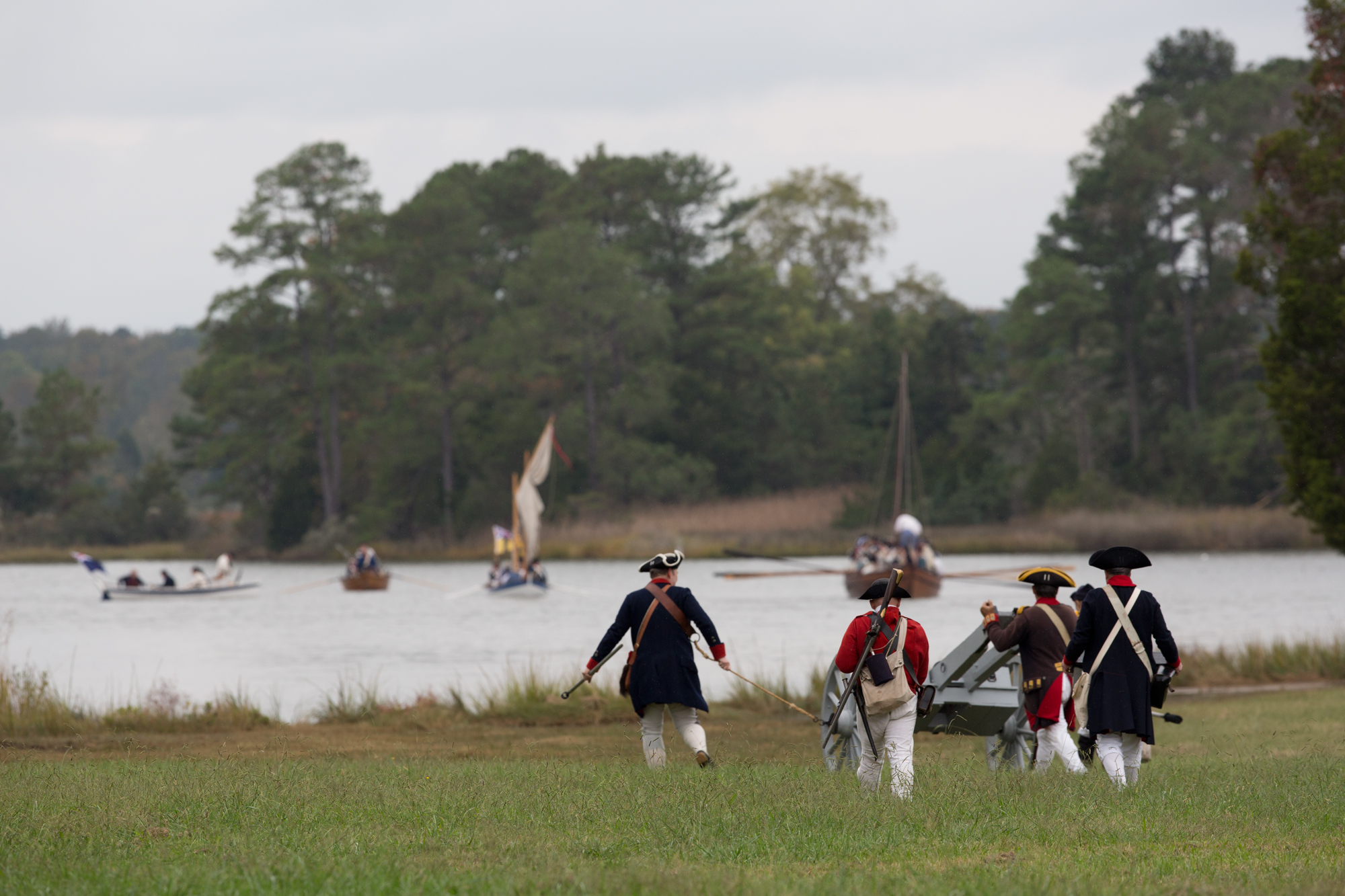“The past is never dead. It’s not even past.” -William Faulkner
Shipwrecks.
Pivotal battles.
Military hospitals.
The site of one of the largest cavalry battles of the Revolutionary War.
And that’s just the beginning – and only naming a few of the key nuggets of military history tied uniquely to Gloucester Point.

Read on for the details about the first shot of the Civil War fired in Virginia, a ship lookout during the Siege at Yorktown, sunken gunships and the final surrender of the Crown forces during the American Revolution.
Consider these more reasons to visit the Middle Peninsula and explore by land or sea, by paddle or car.
Tyndall’s Point
Tucked up near the George P. Coleman Bridge, connecting Gloucester to Yorktown, lies some of Gloucester’s most vital history and a fascinating spot to explore – Tyndall’s Point.
Just after the establishment of the Jamestown settlement, Robert Tyndall arrived alongside Captain Christopher Newport with a batch of English settlers.
A precursor to Captain John Smith, Tyndall did a lot of the preliminary mapping of the region, especially the York and James Rivers.
Just two years later, Smith would re-map the area, donning the name Tyndall’s Point to the area now known as Gloucester Point.

Gloucester Point would become home to one of the York River’s many fortifications, including against the British during the American Revolution and even during the Civil War.
It was at Gloucester Point, at Tyndall’s Point, that the first Virginia shot fired in the Civil War occurred.
Today, visitors can paddle along the edges of Tyndall’s Point or visit the Gloucester County-run park (complete with historic markers and guides to read), making it the perfect spot to see and feel the history of the region by land or by sea.

Little England Farm
Built in 1716 by Captain John Perrin, Little England Farm has some of the deepest American history of Gloucester Point.
With land dating back to a 1651 land grant to the Perrin family and a home built in 1716, Little England Farm was used as a lookout for ships during the Battle of Yorktown, as a hospital during the war of 1812 and a garrison during the Civil War.
The farm itself sits on nearly 60 acres along the banks of the York River and Sarah Creek.
While not open to the public, the Barrs family, current stewards of the historic home and farm, have hosted fundraising events for various charitable organizations in the community and opened the property up for tours that benefit the community and region.
Shipwrecks
Some of the most interesting history of Gloucester Point lies beneath the surface. WAY beneath the surface.
Yes. We’re talking about shipwrecks.
Not just a couple sunken fishing boats, mind you. Legitimate sunken gunships from the Revolutionary War.
It’s been said – and written – that as many as 40 ships were lost during the epic battle for Yorktown in the fight for American independence.
It’s so well documented, in fact, that the muck of the York River became the first underwater listing on the National Register of Historic Places and 10 wrecks have been discovered.
“Some ships were scuttled by General Cornwallis to obstruct an anticipated attack by a French fleet, led by Admiral de Grasse, aiding the Americans,” according to the National Park Service. “Others were sunk during the ensuing battle with General Washington and French General Rochambeau or scuttled prior to Cornwallis surrendering. The remains of many ships lie in the York River including the transport Betsy, the HMS Charon, the Cornwallis Cave Wreck (probably the HMS Fowey), and the transport Shipwright.”
The Battle of the Hook
Want an order of fries to go with your history?
You can do that at Gloucester Point, too.
On the property adjacent to a Hardee’s fast food burger restaurant lies the hallowed ground where the Battle of the Hook took place during the Revolutionary War.
The Battle of the Hook was the “largest cavalry action of the American War of Independence,” reads the historic marker erected on site. “This action, involving as many as 1,500 troops, half of them mounted, ended foraging operations Crown forces has been conducting around Gloucester.”
The victory of the Americans here at Gloucester Point destroyed any chance of the British escaping through Gloucester after battles at Yorktown.
It was, in fact, the final battle of the war.
The British surrender on Oct. 19, 1781 was the last surrender of the Crown forces in North America, and it took place one hour after the British laid down their arms across the river in Yorktown.
